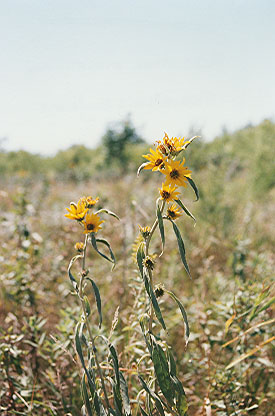Helianthus maximiliani
$5.49 – $9.89
Description
Key Information:
Soil: Hydric (Wet) – Xeric (Dry)
Sun: Full Sun – Part Sun
Height: 3-7 feet
Bloom Color: Yellow
Bloom Season: August – September
More Details:
Suggested Uses: Maxmilian Sunflower can grow quite tall. Its flowers are attractive to butterflies and beneficial insects and the seeds are enjoyed by birds. Goldfinches love the sunflower seeds. Grows best in moist soils. In prairie ecosystems these often grow in proximity to wetlands. They are great additions to filter strips because they absorbs a lot of water and nutrients. They have a rhizomatous root system and can be aggressive in small spaces.
Native Range: Native throughout most of the U.S. but most often found in the Great Plains.
Pollinators/Habitat: Bees, butterflies, moths and other beneficial insects. It is a high-value nectar source for adult monarch butterflies. Maximilian sunflowers are an attractive forage plant and also provide food and cover for wildlife.
Flowers: The flower heads are 2-3″ wide and made up of yellow petal-like ray flowers and yellow disk flowers. Sunflowers (Helianthus spp.) exhibit heliotropism. The flower heads track the sun throughout the day.
Leaves: The alternate narrow leaves are 4-6″ long. They taper at both ends, are rough on both sides, fold lengthwise down the middle, and curve downward at the tips.
Name: The species name “Maximilian” comes from Prince Maximilian of Weid, Germany. He traveled the North American plains in the 19th century with artist Carl Bodmer. Helianthus is the Greek word for “sunflower.”
More information: USDA plant profile
Additional information
| Weight | 2 lbs |
|---|---|
| Size | |
| Color | |
| Characteristics | Full Sun, Partial Sun, Mesic Soil, Wet Soil, Fall Blooming, Tall Height |
| Uses | Attract Bees, Attract Beneficial Insects, Attract Birds, Attract Butterflies, Shoreline, Cut Flowers |
 Wheelbarrow
Wheelbarrow




